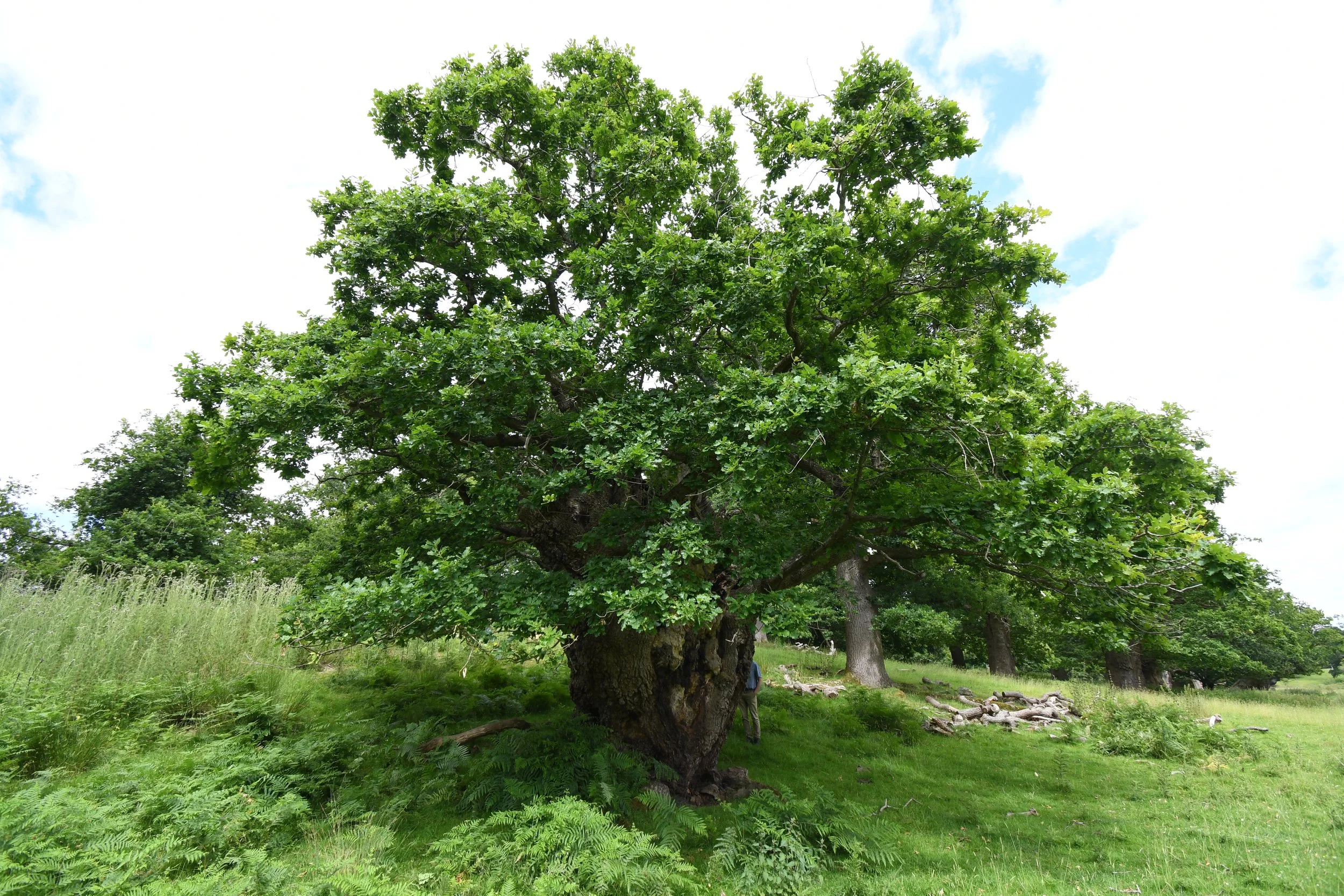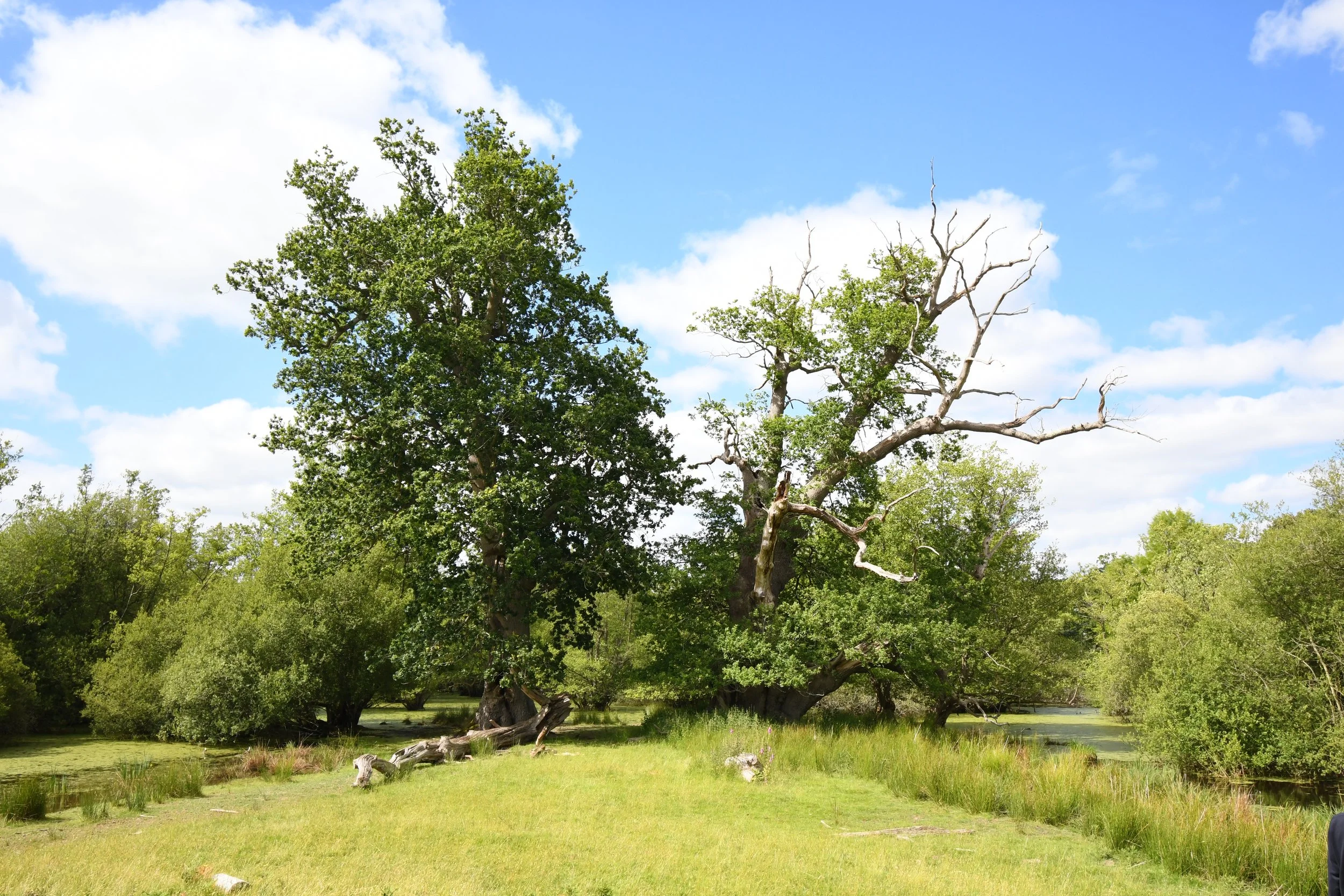The changing health of oak trees in Great Britain
Date: 2025
Timescale: ongoing
Organisation: Forest Research
Lead researcher(s): Nathan Brown
Synopsis
To understand how the world around us is changing we need to collect systematic observations documenting its current condition and repeat this process regularly over time. For oak research long term monitoring of trees and woodlands is established and ongoing.
In 2009 Forest Research established monitoring plots to document the impact of Acute Oak Decline on native oak trees. In total over 1350 trees, spread across eight sites, have been monitored over 16 years. Previous findings from these plots have already revealed important characteristic affecting the progression of this decline disease including: the co-occurrence of Stem bleeds and D-shaped Agrilus biguttatus emergence holes; the clustered distribution of affected trees within a woodland; and the high rates of remission amongst lightly affected trees.
Over the last year the analysis of these data has been extended to investigate tree mortality and its relationship with the visible symptoms of AOD. Understanding these relationships will reveal the ultimate impact AOD is likely to have on broadleaf woodlands and has identified patterns that should enable woodland managers to make better informed management decisions.
The health of trees can often be seen clearly in their crowns. The density of leaves on a tree’s branches directly influences the amount of energy it can capture through photosynthesis, which in turn influences tree growth. By monitoring crown condition, we gain an insight into the underlying health status of oak and the potential impact of environmental factors on tree condition.
“We are lucky that for oak research long term monitoring of trees and woodlands is established and ongoing”
Outputs: See full details in Action Oak 2024-25 Annual Report (publishing in November 2025)
Contact: actionoakinfo@rfs.org.uk


